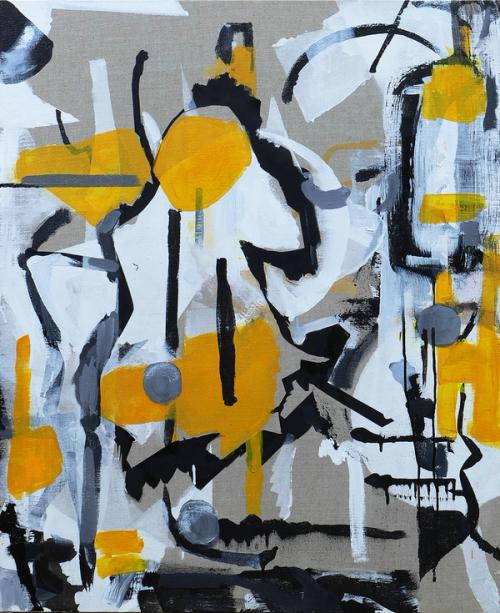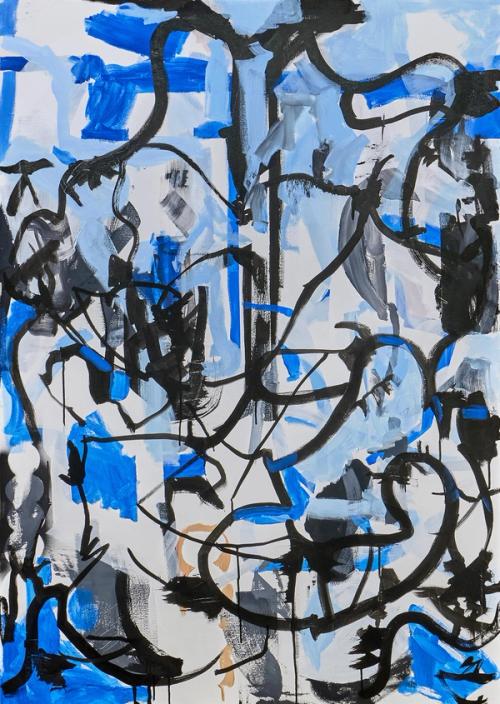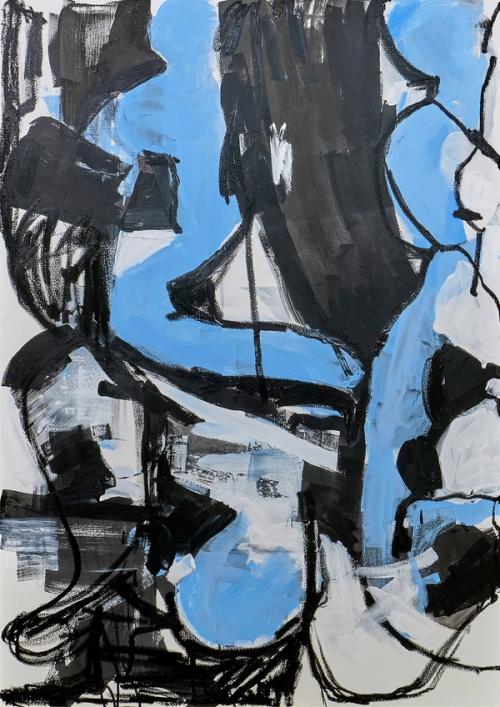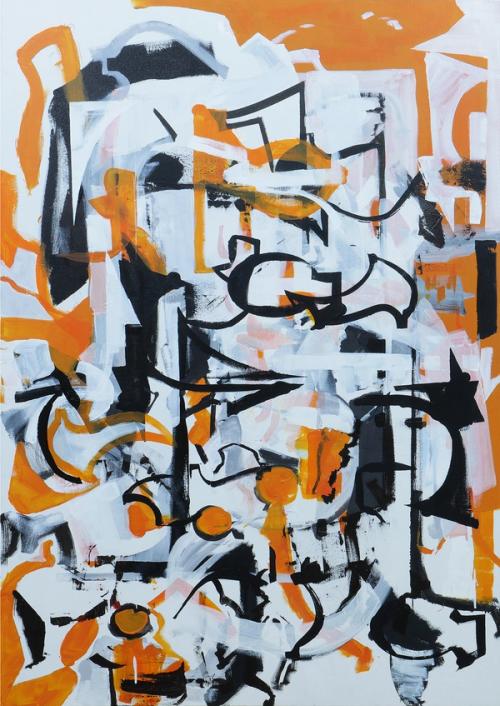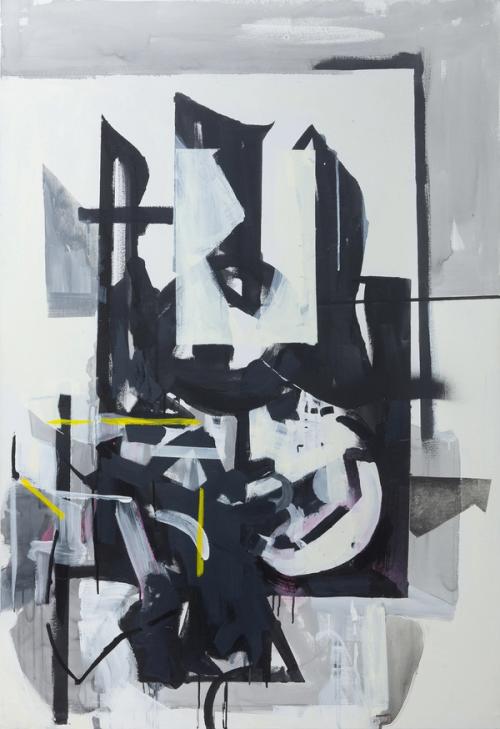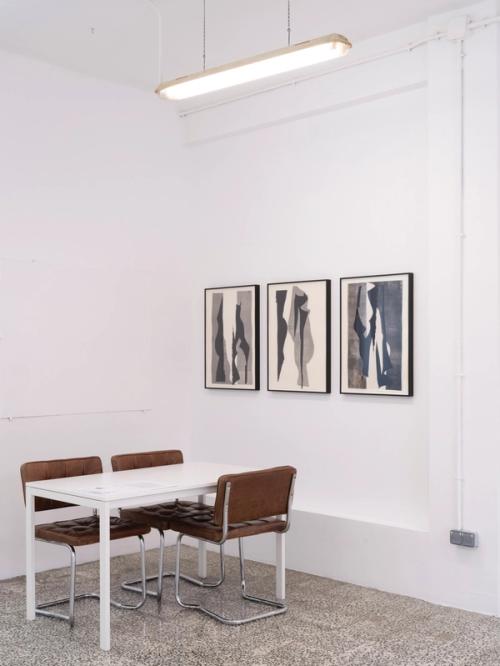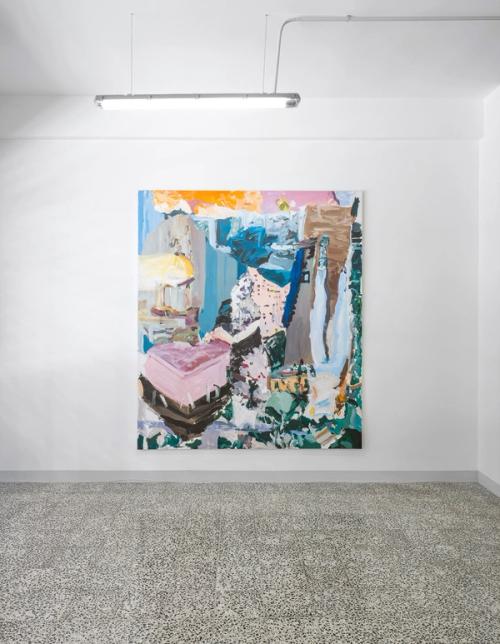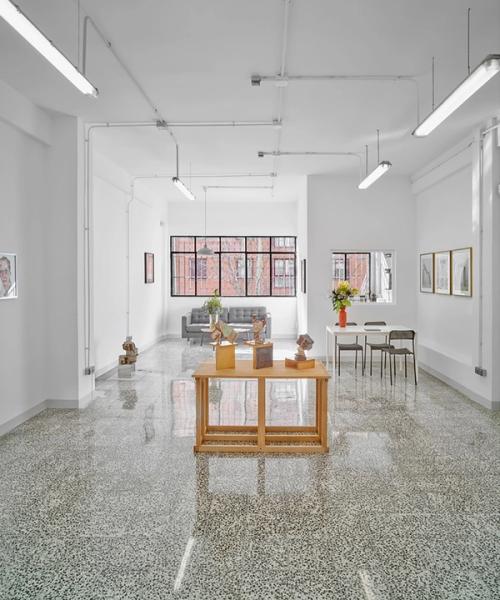Silvia Olabarría
Bilbao, 1974
Silvia Olabarría understands painting as an exercise in which signs, signals, stains and marks confront each other, seeking for a plastic result that generates a deep aesthetic emotion, a place and time to be while looking at a painting. Apparently contradictory according to the tradition that affirms that figurative is the opposite of abstraction, the elements that make up her works sometimes have characteristics of both. Mechanized and industrial aspects participate in her works, as well as organic; improvised strokes are intermingled with the imagined and controlled. The vulnerability and fragility of the silhouettes on paper in front of the melodramatic gesture of the laser cut.
Recently, she has strengthened a personal language around the process, which has used techniques and tools to broaden it, making it the main character of the painting, making it visible. The ultimate end—the form, or the plastic result—is something that she finds, sometimes in the field of uncertainty, in the practice of doubt. She is lately interested in voids, in the fragments and in what is covered and makes it impossible to see the whole field of an image, when she uses templates, she makes interruption an essential element.
The ability to recompose and a kind of negative quality like erasing the blank space, brings to the forefront the most performative and improvisational actions in painting, those linking her with the more gestural tradition of abstract expressionism (Erased de Kooning, painting by Robert Rauschenberg). She also looks at the avant-garde and cubism and their experiments, included in Kurt Schwitters’ rooms, and at the same time to the most contemporary painting which, with a critical attitude, introduces into the pictorial medium the aesthetics of the strange, “silly,” or ironic like Laura Owens, Amy Sillman, Charline von Heyl or Jacqueline Humphries.
Recently, she has strengthened a personal language around the process, which has used techniques and tools to broaden it, making it the main character of the painting, making it visible. The ultimate end—the form, or the plastic result—is something that she finds, sometimes in the field of uncertainty, in the practice of doubt. She is lately interested in voids, in the fragments and in what is covered and makes it impossible to see the whole field of an image, when she uses templates, she makes interruption an essential element.
The ability to recompose and a kind of negative quality like erasing the blank space, brings to the forefront the most performative and improvisational actions in painting, those linking her with the more gestural tradition of abstract expressionism (Erased de Kooning, painting by Robert Rauschenberg). She also looks at the avant-garde and cubism and their experiments, included in Kurt Schwitters’ rooms, and at the same time to the most contemporary painting which, with a critical attitude, introduces into the pictorial medium the aesthetics of the strange, “silly,” or ironic like Laura Owens, Amy Sillman, Charline von Heyl or Jacqueline Humphries.
